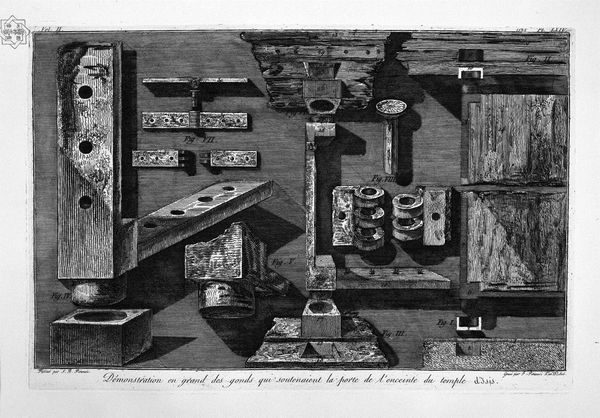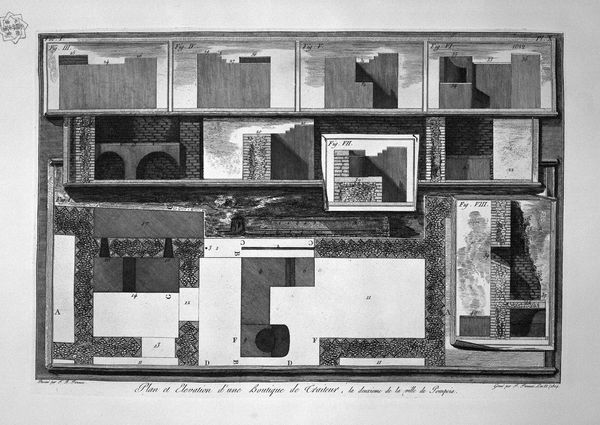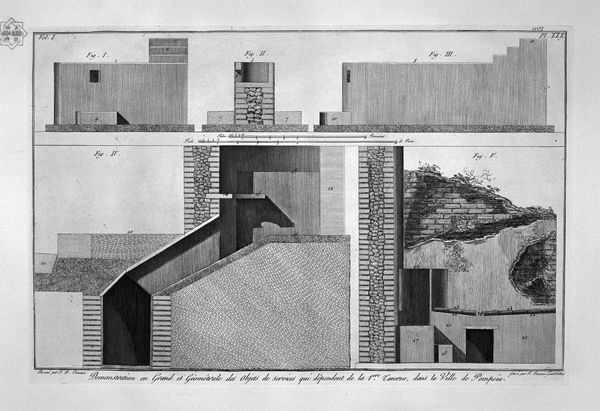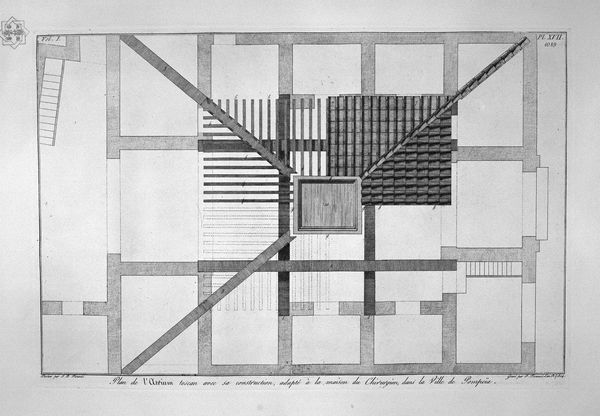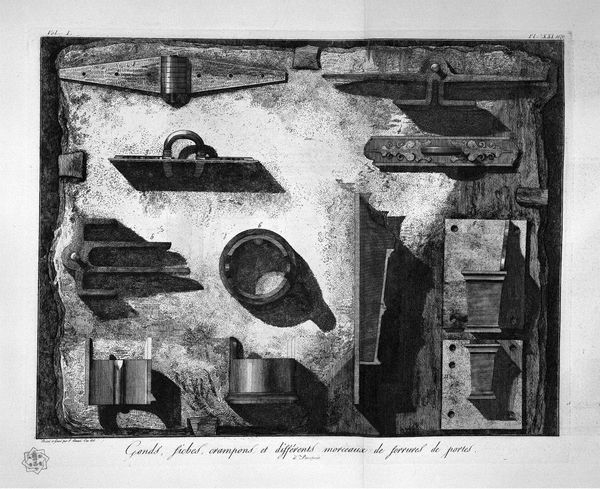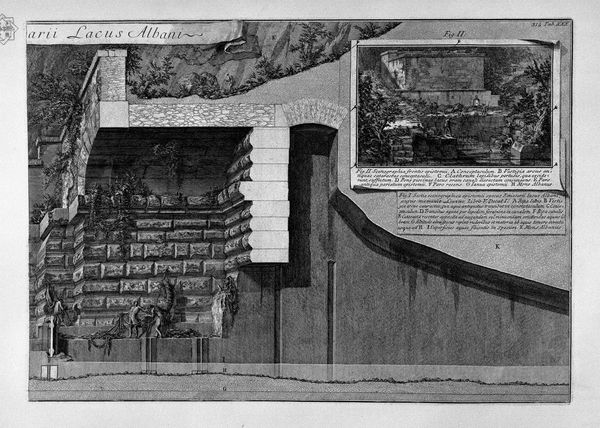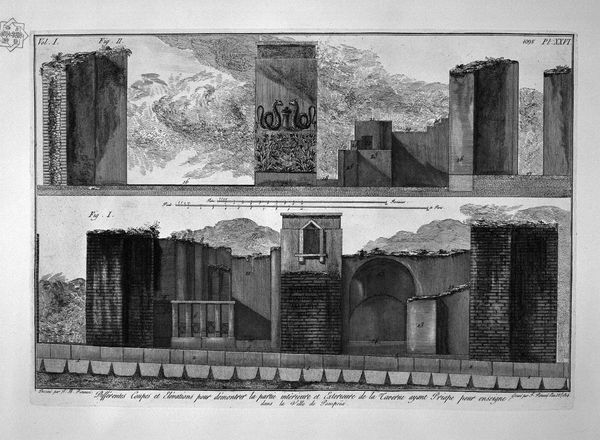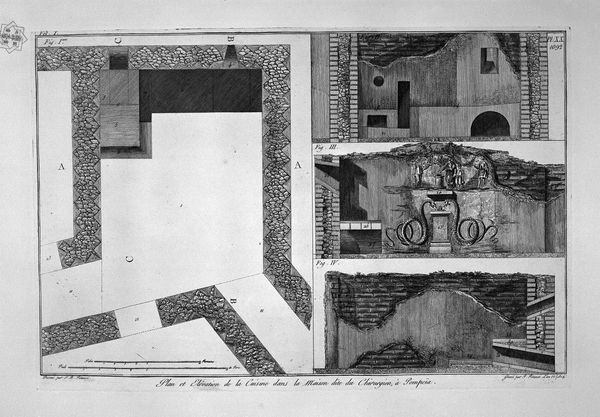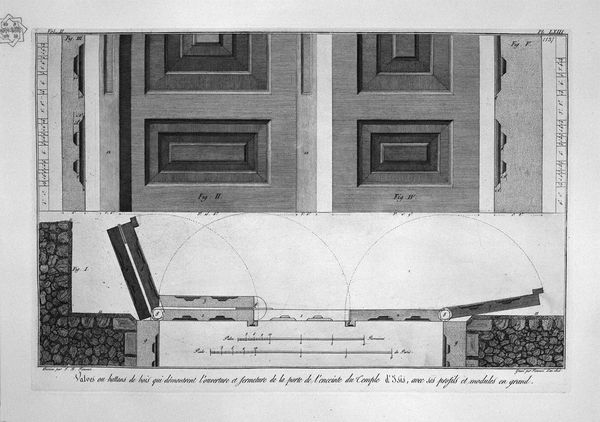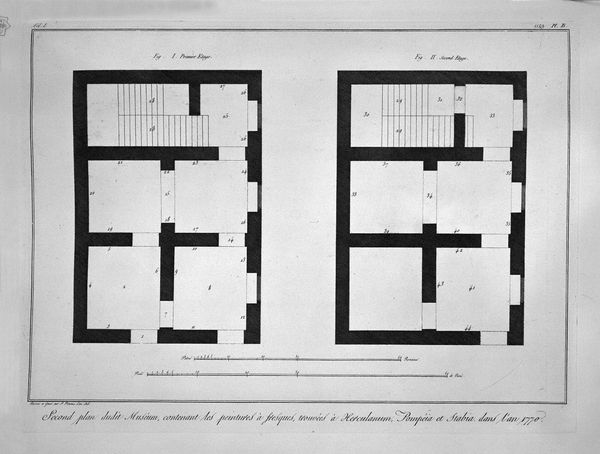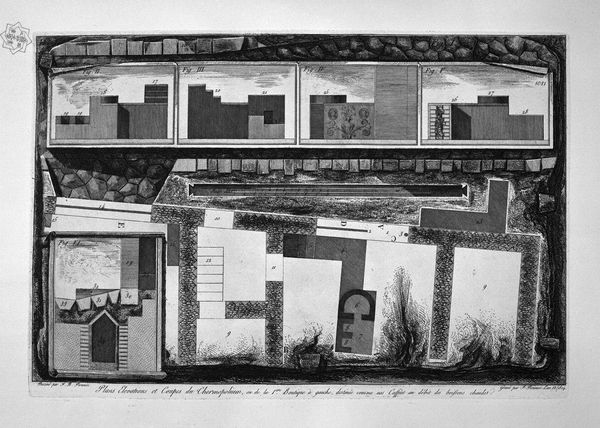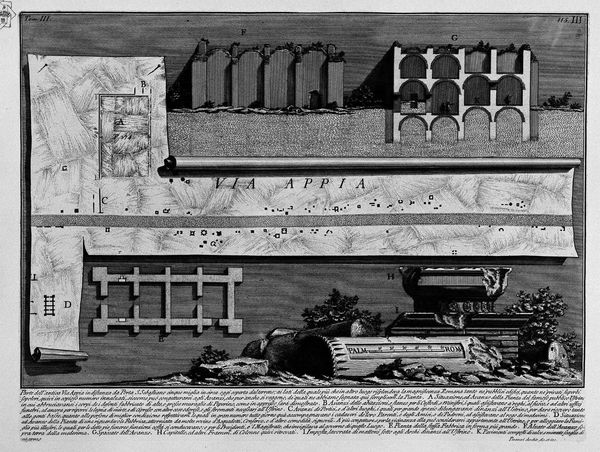
drawing, print, engraving, architecture
#
drawing
# print
#
landscape
#
perspective
#
charcoal drawing
#
romanesque
#
geometric
#
ancient-mediterranean
#
column
#
cityscape
#
charcoal
#
engraving
#
architecture
Copyright: Public domain
Curator: Giovanni Battista Piranesi’s "View of the Tavern of Pompeii Dedicated to Priapus" offers a fascinating look into Roman social life through the lens of architectural engraving. It gives us a moment to pause and consider not only form and space but also daily lives. Editor: Whoa, first impression? It feels…clinical? Like an architect’s blueprint mixed with a charcoal dream. All stark angles and grayscale, like looking at Pompeii through the eyes of a melancholic robot. Curator: Well, its strength lies precisely in Piranesi’s method. As an engraver trained in architecture and stage design, his detailed renderings present the tavern as a space of historical importance but also a complex interplay between private and public, production and consumption, masculine power and social discourse. Editor: Masculine power, huh? All because of that Priapus dedication? I'm instantly picturing all these boisterous dudes throwing back wine, making questionable decisions beneath some massive, um, phallic statue. But what were they *doing* there, really? Beyond drinking, of course. Curator: I like that impulse: think past its formal elements to question whose perspectives get inscribed in the visual and historical record. In Roman culture, taverns functioned as community hubs. Viewing it now can invite dialogue on issues of class, gender, sexuality, and even the roots of contemporary culture through examining the remnants of ancient civic life. Editor: Makes me think about today's social hierarchies. Then it was wine and phallic symbols. Now it’s overpriced cocktails and…well, Instagram likes? Both fueled by performance, I guess, a show for an audience. Still, there’s something about this stark, almost alien, presentation. No romanticism, just angles and shadows and cold stone. Curator: Perhaps because, as a historical record, it indirectly shows what has been lost. We project ourselves into this space across two millennia. We grapple with the disjunction between how things once were and how they persist in shaping contemporary realities. Piranesi invites us to make links across time. Editor: Exactly. And that’s the strange power of it, isn't it? Even with its somewhat cold detachment, this engraving throws a shadow forward, reminding us that the past is never really past, it’s always whispering, even yelling sometimes, from the foundations beneath our feet. Curator: Nicely put. It’s a powerful demonstration of the role of art in making visible what's been effaced or obscured. Editor: And sometimes it's just a little spooky. Makes you wonder what future artists will dig up about us, right?
Comments
No comments
Be the first to comment and join the conversation on the ultimate creative platform.
